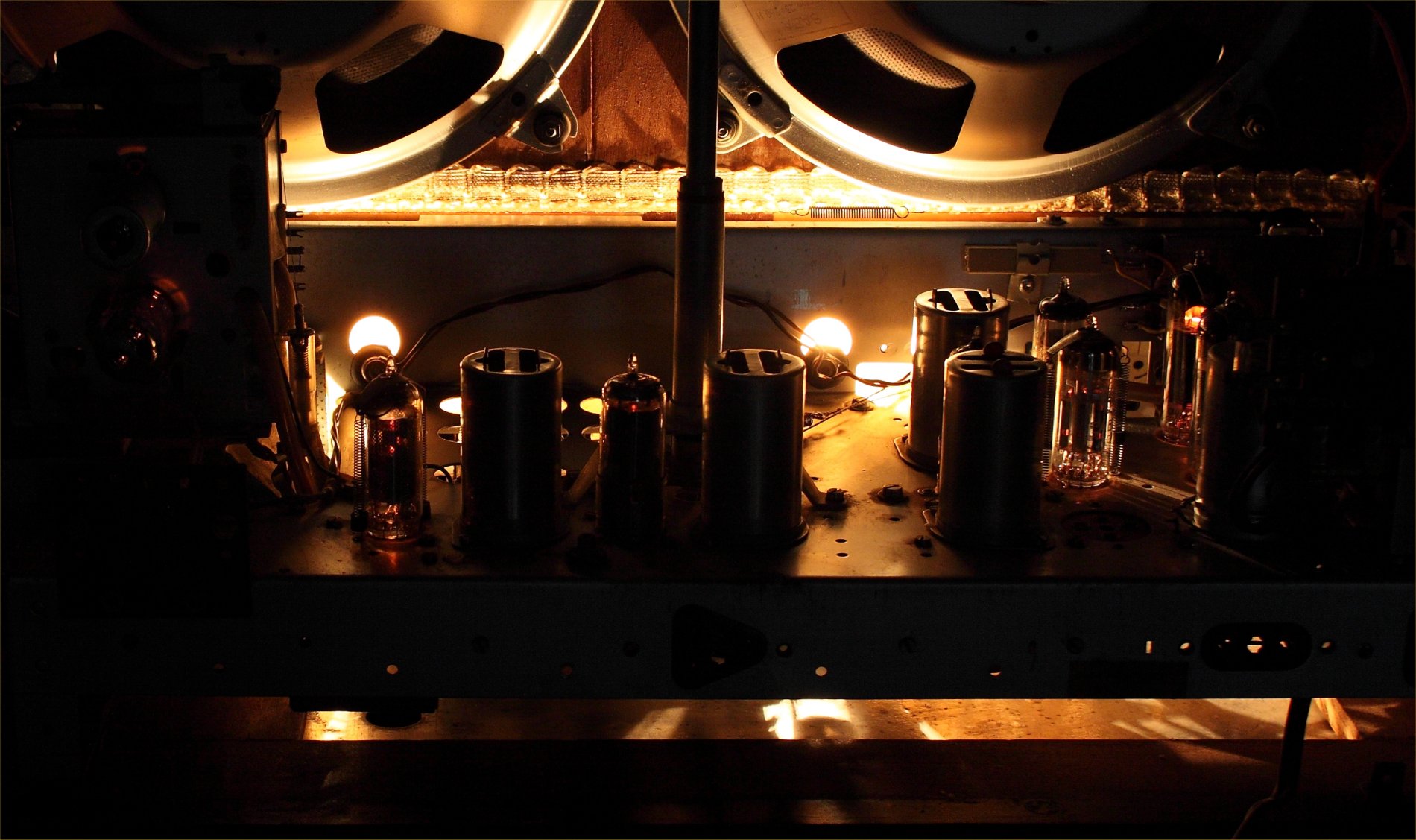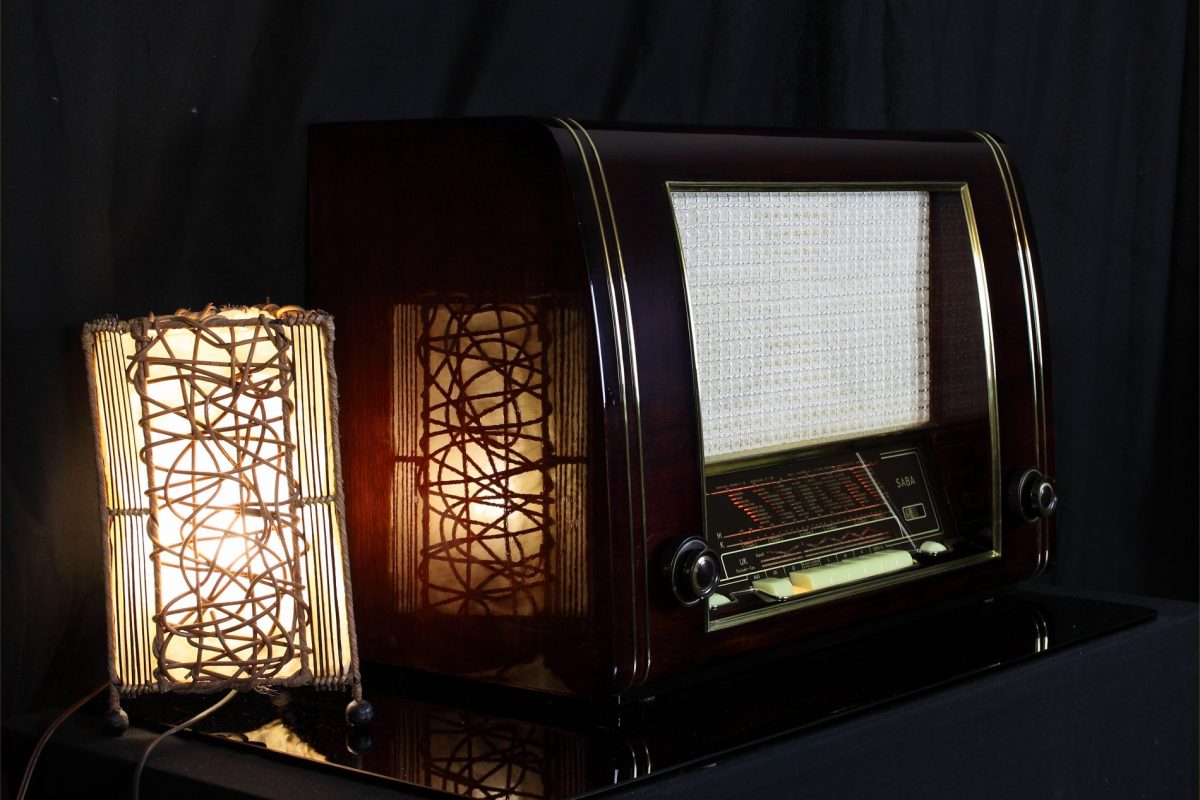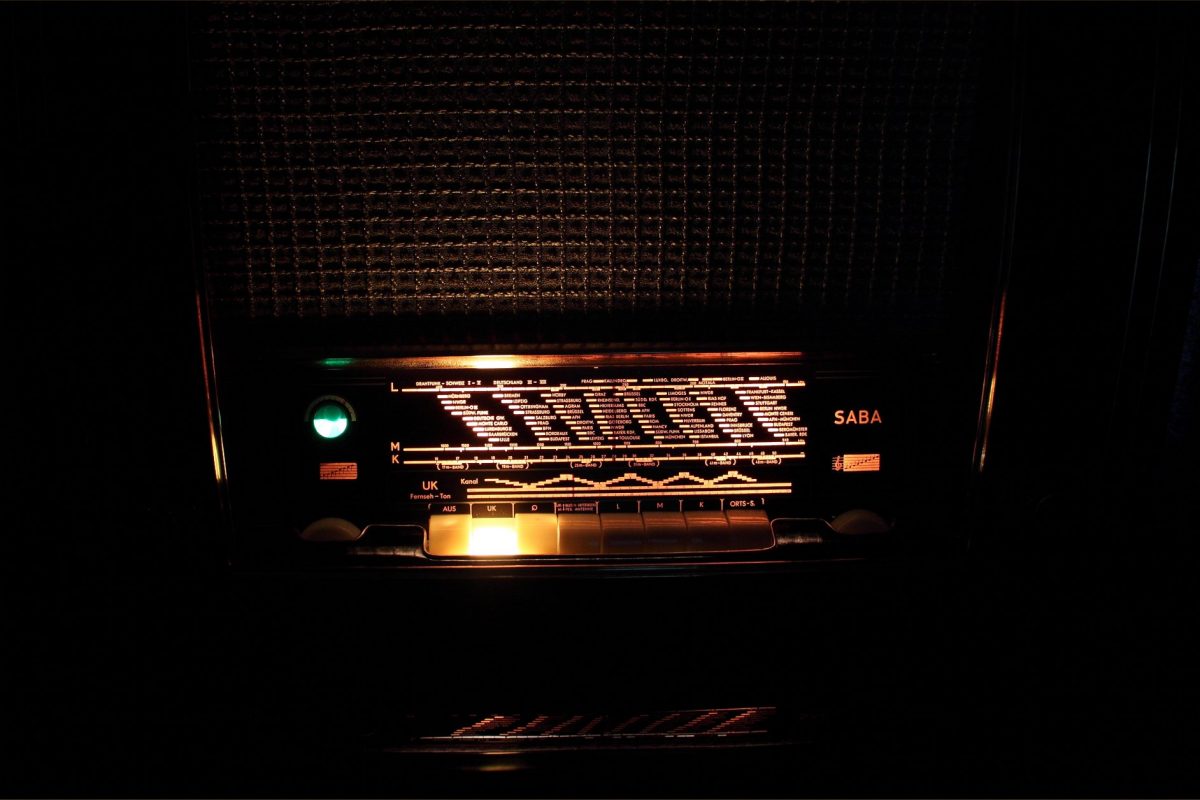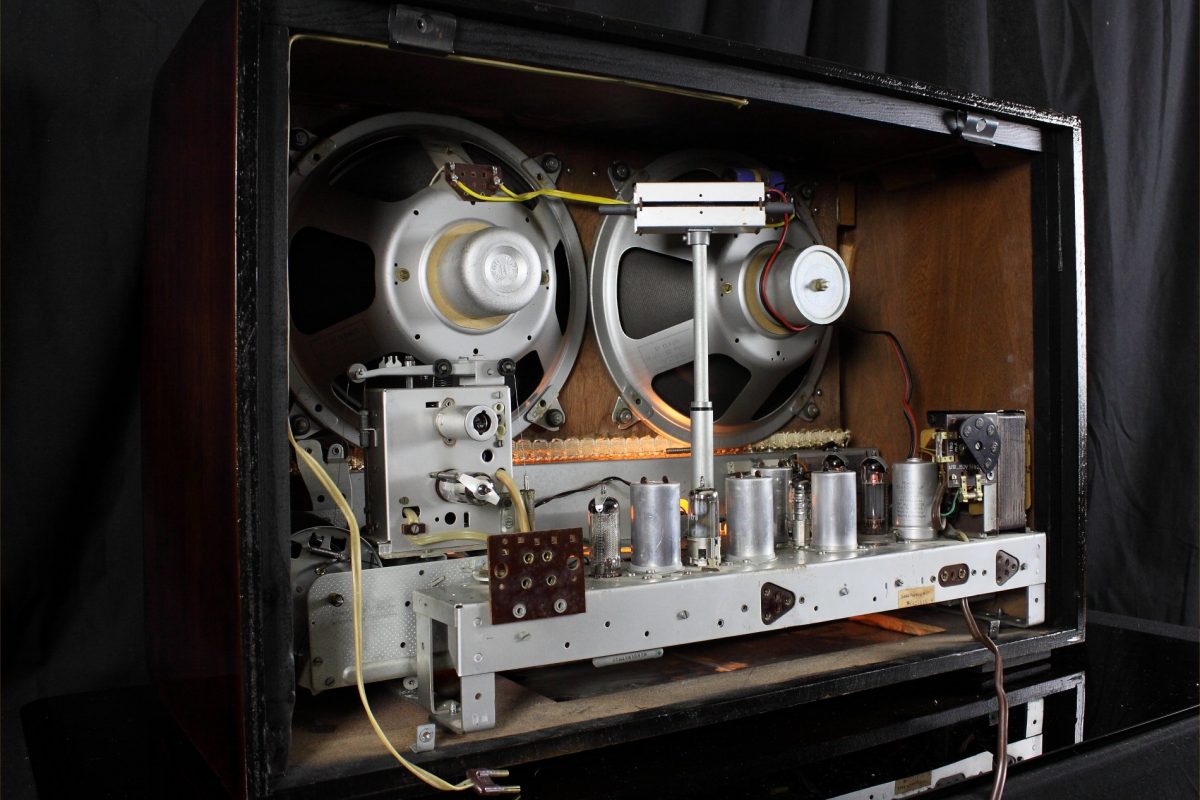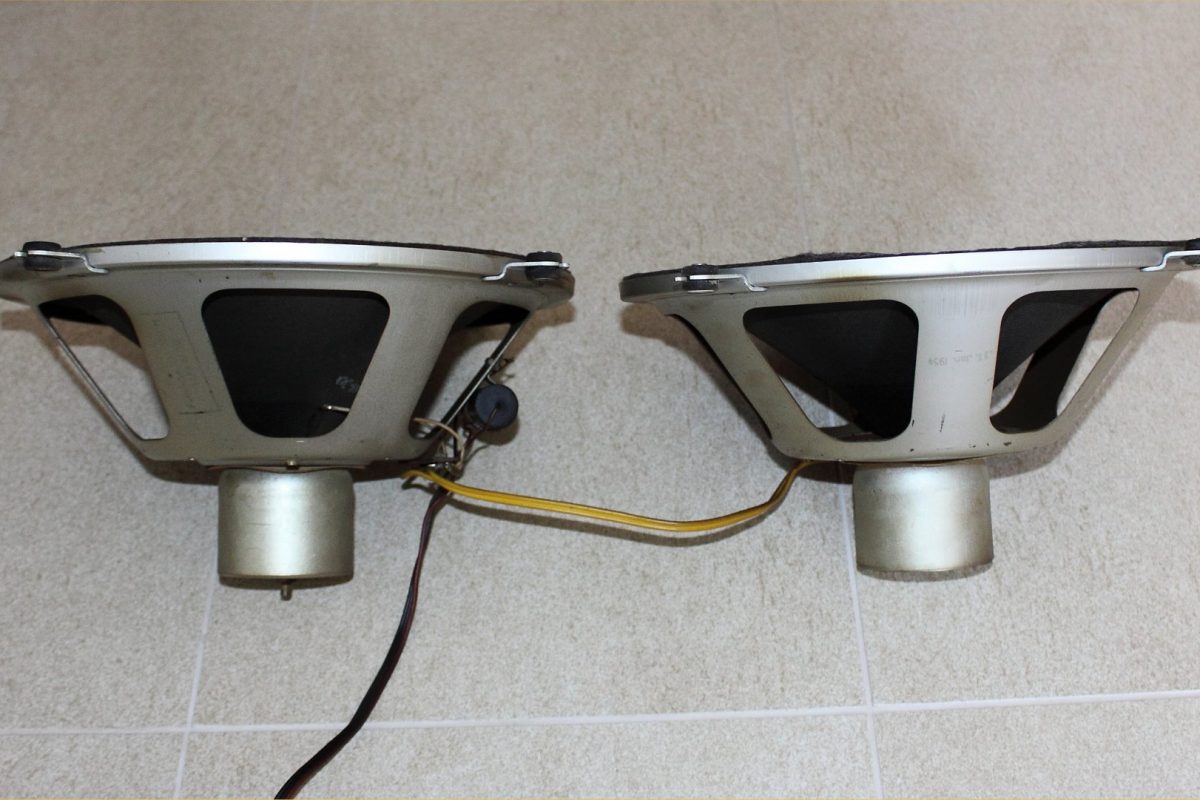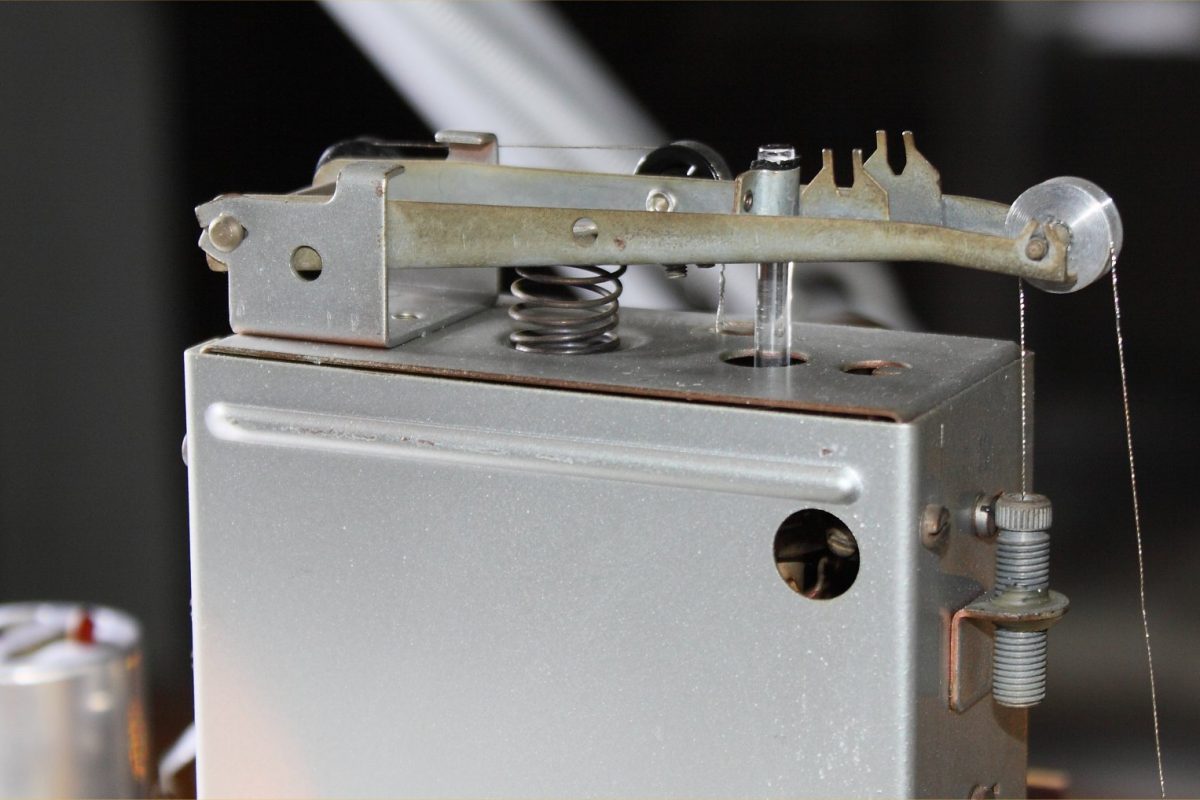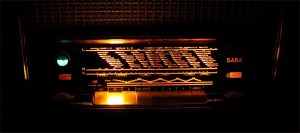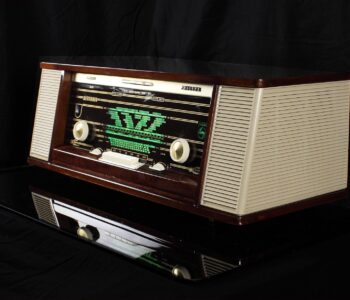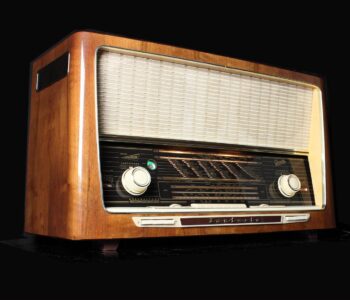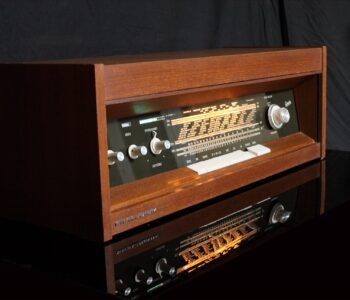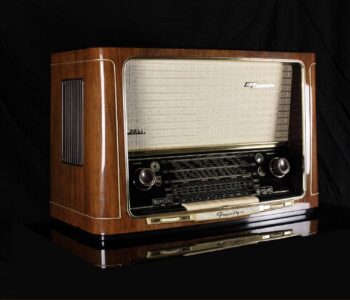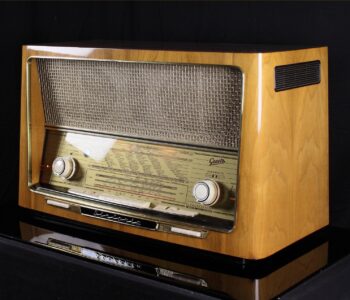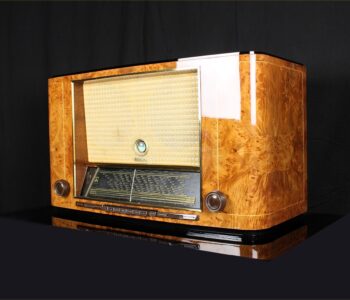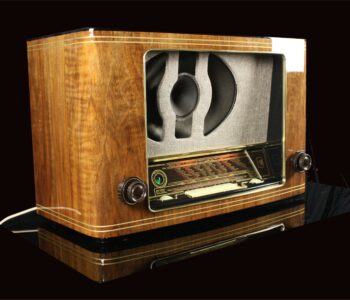 freiburg w3 - cn
freiburg w3 - cn
Saba Frei…
- by giovanni
SABA FREIBURG WIII
Saba Freiburg WIII
Saba Freiburg WIII is the company's flagship model in 1953. In that year, only Grundig 5050 could compete with Saba Freiburg in terms of sound quality.
No other device was provided with concentric loudspeakers and, at the same time, with the 2 x EL84 (6BQ8) push-pull power amplifier.
The sound performance is very satisfying in both devices. The tweeter aligned with the woofer plays voices and solo instruments with unsuspecting brightness and presence.
With the second reinforcing woofer, the depth of the bass is inspiring and the holding power is also remarkable.
We are talking about actual 7W which, with such powerful loudspeakers, enough for large places.
The solution of concentric loudspeakers, unfortunately, was not adopted for the devices subsequently created both by Saba and Grunding, but it was later taken up by Graetz for some of its top-of-the-rang models.
Now, it is one of the most adopted solutions in Hi-End speakers.
In the radio section, three peculiarities can be underlined:
- the Muting button
By pushing this button, the FM stations search becomes very quiet. The noise and interferences that are normally heard while moving from one station to another in the research phase are quietened. The Tuning Indicator decreases its sensitivity in the interval between two stations, regaining automatically the maximum sensitivity as soon as it gets closer to the station. A pleasant and exclusive refinement. - KW-Lupe
When listening to broadcasts in the short wave band, tuning is often difficult because of the small bandwidth. It only takes a slight movement of the knob to lose the station. In order to solve this problem, Saba drew up the tuning precision control in Short Waves (KW-Lupe). This is how it works: press button K to select the Short Wave band. Tune to a radio station through the big knob of AM bands. Finally, refine the tuning by turning the small knob of the FM band, which in this case works as precision tuning for Short Waves. - ORT-S.
It is possible to store a radio station in Medium Waves and rename it simply by pushing the ORT-S button. The storing mechanism is very simple. Press button ORT-S. Under the radio there is a hole with a screw. By turning that screw with a screwdriver, it is possible to tune to the favourite station. From this moment, every time the button ORT-S will be pushed it will tune to the preset station. In order to listen to other broadcasts in Medium Waves, it will be necessary to just push the button M and use normally the big tuning knob.
As usual for German companies, the series name, Freiburg in this case, is maintained throughout the years, even if the models produced are very different from each other. Among the devices of the Freiburg series, the WIII model has unique features. The previous models do not have the same tone controls, the next models lack the concentric loudspeakers. They have other features, equally interesting... but not these.

-
BLUETOOTH
Bluetooth receiver embed
-
MULTI PLATFORM CONNECTION
Each radio is equipped with a cable for connection to any digital device.
TUBESOUND IMPROVEMENT
Bluetooth receiver embed – The unit is equipped with a BLUETOOTH receiver powered directly by the receiver power supply. This makes it possible to control the amplifier from any external digital device as an IPAD, a Smartphone, or a sophisticated multimedia station. So you can hear your preferred web station or your lossesless file without cables on the room. Wireless Receiver can be equipped upon requests.
– Multi Platform Connection – A customized adaptation cable to connect any digital device as Iphone, Smartphone, Laptop, CD Player etc. will be provided with this radio. This special cable suits the different impedances between the modern equipment and the receiver. Furthermore the two stereo channels flow into one without increasing the load to the input unit.
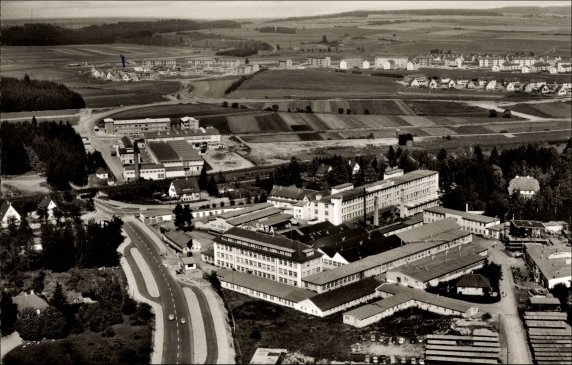

HISTORY
SABA is the acronym for Schawarzwälder-Apparate-Bau-Anstalt meaning engineering institute of Technological appliances of the Black Forest.
The company was founded back in 1835 by Joseph Benedikt with the initial name of Jockele-Uhren, but only in 1923 the production of radio devices began and the company went under the name of SABA.
Toward the end of the 20s SABA became famous with the well-known S35 and in the following years it became the second German producer after Telefunken. During the war SABA produced military equipment and in 1945 the company was completely destroyed by a bombing.
In 1947 the production of radio devices began again and SABA distinguished itself immediately for ist avant-garde and high- quality production.
hey also began to produce TVs (the first PAL color TV is a SABA), house appliances and medical equipment. Many Italians used to work there. The Alnico Greencone loudspeakers became popular for their linearity, power handling, constant impendence that would be employed in each Hi-Fi devices of that time.
The radio devices with motorized tuning became popular as well and SABA became the representative German brand meaning quality, reliability and detailed precision. In the 1970s the decline began. According to specialized magazines of that time not having a Japanese device at that time meant not having Hi-Fi. In the 80s Thompson took over SABA. In the 90s the other way around, having a Japanese device of the 70s meant not having Hi-Fi. They found out that they functioned with a 96% counterreaction and that a device with 0.001 db from 1 to 100 KHz extension did not necessarily sound good.
We do not trust our ears and we do trust what other people say not necessarily with a good purpose.
2007: due to insolvency SABA disappeared from the TLC (Chinese) and Thompson (French) joint venture, and SABA ceased to exist.
MAIN FEATURES
Year of production: 19523
Superheterodyne IF: 472/10700
12 AM Circuits 11 FM Circuits/5
Wavebands: LW, MW, SW, FM
Loudspeakers:
1 Woofer with assial Tweeter
1 Woofer
Dimensions (LHD):: 660 x 435 x 314 mm / 26 x 17.1 x 12.4 inch
Net weight: 19.8 kg / 43 lb 9.8 oz (43.612 lb)
10 Tubes: EF80 EC92 ECH81 EF41 EM71 EAF42 EABC80 EF40 EL84 EL84

LOUDSPEAKERS
The loudspeaker polar diagram.
This is an example of polar diagram of a coaxial loudspeaker. The different lines show the sound intensity at the angle and frequency change. It's evident the minor directionality of low frequencies respect to those high.
We studied the positioning of the two loudspeaker to obtain the best response at a distance of 3 up to 6 meters.
To avoid pointless words, you have to listen to the result.
TONE CONTROLS
The tone control system is peculiar. It is a Baxandall configuration system with a particular feature, it interacts with the feedback system. This ensures an effective control of the band providing at the same time a reduction of distortion. The use, anyway, is very simple, as we can find the usual tone control knobs at the sides of the display. The colour of windows on the display progressively changes with the rotation of each knob. In this way, it is possible to get an impression of how much tones have been enhanced.


AERIALS
The device is provided with two internal aerials. A fixed dipole for the FM and UK bands and a rotary ferrite for MW and LW bands.
Clearly, the device is provided with sockets for external aerials on the back.
The ferrite aerial can be rotated with the big knob behind the volume knob.
Around the Magical Eye there is a seal with an indicator which reveals the position of the aerial.
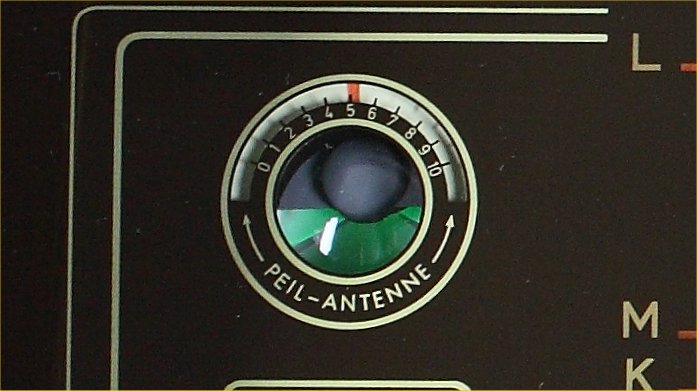
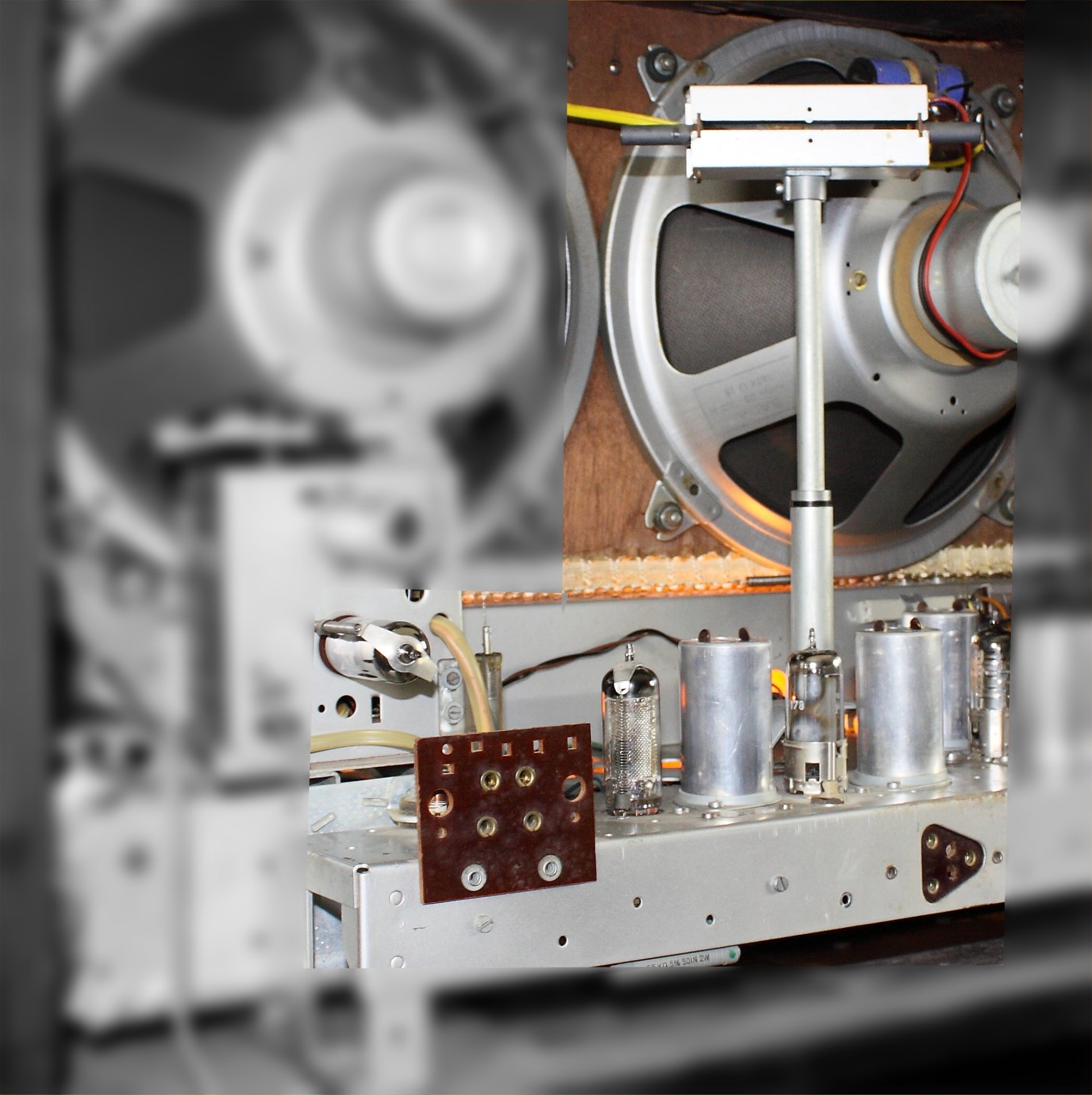
SEPARATE CONTROL TUNING BETWEEN AM AND FM
The tuning system is another gem.
The unit is equipped with mechanisms for keeping separate the AM and FM bands.
The movement is transferred to both mechanisms with a system of pulleys and separated gears.anica.

TUNING INDICATOR
The magic eye has of course been replaced.
CONTROL PANEL

The Volume is controlled by the big knob on the left, the physiologic compensation is integrated.
The front knob, smaller, enables to rotate the ferrite aerial.
Moving right, on the tuning dial we can first find the tuning indicator (Magical Eye).
Around the Magical Eye we can see a crown with the indicator of the position of the ferrite aerial.
Just below, we can see the window of the bass tones indicator, and further below the bass tones knob.
Moving further right, we find the dial glass with the different bands, Long Waves, Medium Waves and Short Waves.
The UK section is the scale of the FM band.
Below it, we can see also the scale of the TV channels, which could be listened to installing an additional module.
Further under is the keyboard, the buttons of which have the following functions:
AUS - Turn Off
UK - FM band
Ϙ - Turntable
UK/M - (FM) Tuning Mute - (AM) - Ferrit Antenna (otherwise Off)
L - Long Wave
M - Medium Wave
K - Short Wave
ORTS-S - OM preselected station
Moving left we can see the window of the treble indicator, and below the treble knob.
Finally, on the left remain the two concentric knobs of the tuning.
The one on the back, bigger, regulates the tuning of AM bands (OC, OM, OL).
The front one, smaller, regulates the tuning of the FM band (when the UK button is pushed).
When it is the K button to be pushed, instead, the same knob regulates the fine tuning of the Short Waves.
Under the radio we can find the two pre-selection screws of the OM station, which can be listened to by pushing the ORTS-S button.

REAR SIDE
Output for external speakers.
Socket for recorder (tonbandgerat).
Turntable input (Tonabnehmer)
AM and FM aerial inputs and ground socket.
RESTORATION STEPS
THE USUAL AMAZING LAST IMAGE
